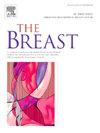The 2024 Assisi think tank on breast cancer: Focus on the use of a tumour bed boost after breast conserving therapy
IF 5.7
2区 医学
Q1 OBSTETRICS & GYNECOLOGY
引用次数: 0
Abstract
At the Fifth Assisi Think Tank Meeting (ATTM) on breast cancer, one key topic was the role of tumor bed boost in invasive breast cancer and ductal carcinoma in situ. The need for a tumor bed boost after whole breast irradiation is controversial. A literature review assessed boost indications, target volume definition, techniques, dose fractionation, and ongoing trials. Findings indicated that while a boost halves the risk of local recurrence at 10 years, it also leads to worsened cosmetic outcomes and increased fibrosis without improving overall survival. Therefore, we would recommend to omit the boost if the estimated reduction in local recurrence at 10 years is less than 3 %, and to apply shared decision-making with patients, if the boost is expected to reduce the local recurrence rate with >3 % at 10 years. Future research will focus on identifying patient subgroups that can safely omit the boost and improving boost volume precision.
求助全文
约1分钟内获得全文
求助全文
来源期刊

Breast
医学-妇产科学
CiteScore
8.70
自引率
2.60%
发文量
165
审稿时长
59 days
期刊介绍:
The Breast is an international, multidisciplinary journal for researchers and clinicians, which focuses on translational and clinical research for the advancement of breast cancer prevention, diagnosis and treatment of all stages.
 求助内容:
求助内容: 应助结果提醒方式:
应助结果提醒方式:


